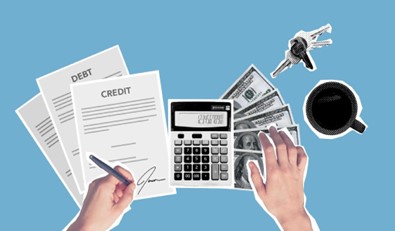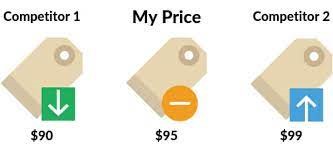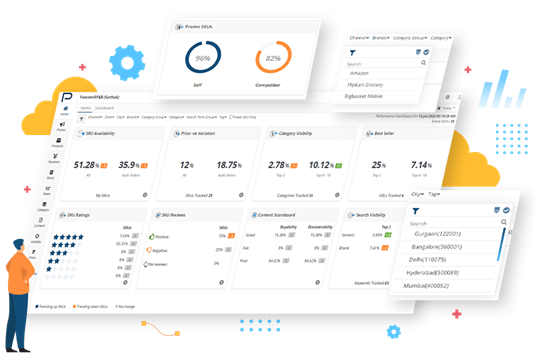Setting a pricing strategy for Amazon products as well as figuring out what price to use can be challenging. In this blog, we will be covering just that in order for you to understand how it is affecting your sales.
The importance of pricing in dominating sales and ranking cannot be overstated. Like many things, pricing combines instincts and rules. Put yourself in the shoes of a designer. Designers rely on both technical knowledge and artistic vision to create the desired end result.
Pricing is the same. Setting prices involves a mix of rules and gut instinct. Like a designer, you’ll want to familiarize yourself with the rules before you begin relying on your gut. In light of Statista’s statistics, 90% of users base their purchase decisions on price, so how competitively you price your product is essential.
Have you figured out Pricing Amazon Products? Consider these points for a better understanding.
Table of Contents
1. Prioritize your costs and Amazon fees

You are probably going to have a pretty specific idea of what your target margins are. Having said that, you must count all the costs along the way before you can even begin thinking about the final price of a product. Whether it is manufacturing, inventory, marketing, or shipping, there are a number of expenses online retailers have to consider when setting the final price of the product. Consider the following factors when calculating total costs:
- Determine your actual warehouse storage costs. In addition, if you are using Amazon’s fulfillment service, FBA (Fulfillment by Amazon), this price must also be calculated.
- Estimate the shipping fees you’ll need to pay to move your products from manufacturers to warehouses and then to customers.
- Analyze the cost of your advertising campaigns.
- You can calculate the return fee by comparing all your profit margins lost during the return, including Amazon’s 20% return commission.
So, before you finalize your product’s price on Amazon, you must determine all these costs. Each of these equations can assist you in choosing a profitable margin for each product.
2. Price competitively, a quality that Amazon insists upon

What pricing competitively means, though?
As many of you know, customers are what makes you win; this means that you need to build confidence with them every time they go through your product page or brand store. And to build that confidence, you have to ensure that when they receive a feature offer or BuyBox, they know they are getting the lowest price possible. As per the Amazon survey, it was found that users always compare prices before buying to get the best price without having to give up on the quality and the brand that they want.
As per Amazon, competitive pricing means that if a product is priced at or below the price, customers usually find it from reputable retailers outside Amazon. For example, let’s say a user is searching for ‘Mascara’ and finds it’s $10, and when they compare it to Amazon, it is priced at $12, then it is competitively priced. Now, you can understand the importance of it and know how your pricing strategy can unknowingly be costing you sales.
3. Understand Consumer Psychology
An understanding of consumer psychology can help you determine their likes and dislikes. Consumers’ perception of a product is generally taken into account when making price decisions rather than just its cost.
A study on consumer psychology behind online shopping is carried out with a review of the significant findings; it is suggested that there are five groups of consumers with five different price-related behaviors in the context of Amazon: Consumers who buy because they like the brand, Consumers who buy because they like to get free shipping, Consumers who buy because it’s a good deal, Consumers who buy as a means to show off, Consumers who buy for convenience.
These actionable insights will help you decide to set up a profitable pricing strategy.
4. Price as per the branding
Branding is important before selling your products. Your general rules will vary if you’re selling as a premium brand or a low-cost leader.
A low-cost leader product relies more on changeable pricing and knowledge of other products than it does on sophisticated marketing techniques. And, ofcourse, don’t forget the digit in front or behind the decimal point can influence prices, even if they are all rounded to whole numbers. In order to make products appear low-cost, end prices in .99 rather than round up.
When you’re selling products with premium quality, you may want to aim for a consistent, slightly higher price to convey a sense of quality. In addition, maintaining a minimum advertised price can help you maintain a certain pricing threshold and protect your brand image. Set your price at $50.00 rather than $49.99, which indicates a low-cost product.
To make pricing decisions of this kind, you need an in-depth understanding of your brand and your customers. Brand-based pricing can be tricky without understanding consumer perceptions, price sensitivity, and how your products stack up to other low-cost or premium items. A key aspect of pricing is whether customers find it fair, which may require some experimentation.
5. Inculcate all customers’ sentiment analysis
Make use of your existing customers and use the negative reviews to improve your pricing strategy. Using the existing customer data, identify a common point for further analysis. Using customer reviews to set prices accurately is extremely valuable, even when they are used simply as guides.
This can be accomplished with sentiment analysis, a valuable tool that analyzes data at an unprecedented scale with unsurpassed accuracy and in real-time. As a result, brands are able to make data-driven decisions. As an example, if you have a loyal customer base and consistently good reviews, you can tweak your product pricing to a bit higher end and can still have strong sales.
6. Take the Help of the Automated Pricing Tool
Increasing your sales on Amazon is contingent on winning the buy box section. Most customers want to get a good deal on a product. This means there are more chances of a product with the lowest price winning the buy box. However, how do you find the lowest price of any product? With the automation tool, your product pricing can be automatically adjusted based on your competitors’ price changes.
It can help you be competitive and win the buy box. In addition to this advanced Amazon service, you can use it when you are setting a price for your products. By using this tool, you can evaluate your competitors’ prices faster than you could manually.

Conclusion
Setting your pricing ecosystem and your brand tone takes some work. Pricing can affect your ability to increase your profit margin. Unless you have a comprehensive pricing strategy, all your efforts will be wasted. For these reasons, it is essential to learn about customers and competitors and calculate the product’s overall cost.
As a multidisciplinary team, we have experts in e-commerce, development, business, and marketing to assist you with your needs. Join us and let us help you build a successful Amazon business. Interested in learning more about pricing strategies, marketing, or development segments, please contact info@paxcom.net














